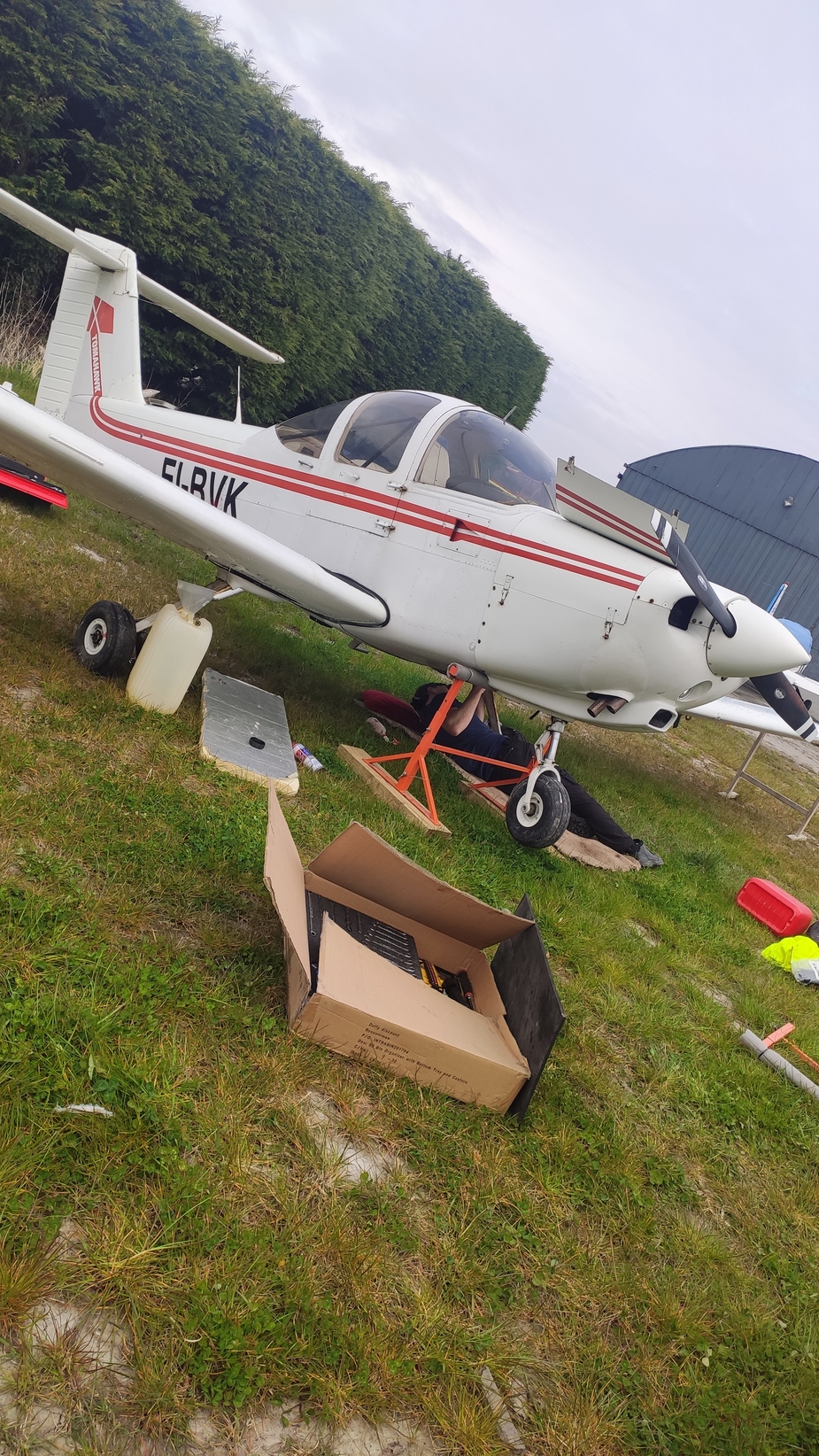“It’s enough that I have to fly on the Pa28 with my students. Nobody needs more Piper in his life than that”
I have said those exact words on several occasions, although I admit I still enjoy the old Dakota and its performance.
What I do not immediately understand, is why a C172 should be so much better than a classic PA-28, apart from the obvious advantage of having two doors. Bosco?
There are very very few Tomahawks in France. I like their looks though.
How does one 1m92-tall person fit in them ?
A_and_C wrote:
The reasons I did not buy the PA38 for training use was based on the fatiuge life of the main spar and the lack of parts back up form Piper, also the AD’s on the tail are quite labour intensive.It is a much better trainer than the C152 until the parts become an issue and you can’t fly the PA38.
I parted out a complete, damage-free 4,000hr PA38 for this reason. We sold the engine so far, and some interior parts. If anyone needs parts don’t be afraid to ask. The wings will be very useful to someone.

The Tomahawk has a checkered past and has a terrible spin accident rate. The airplane that was certified was not what was produced in production as the wing had the number of spar ribs reduced making the wing more flexible and provided a less predictable stall and spin. I flew in one once. In the south, it was not pleasant to fly in the summer with all the glass. I believe there was an AD issued to stiffen the wing. The T tail has undesirable pitch characteristics on takeoff and landing requiring proper speed control. The Tomahawk was unpopular in the US. Most flight schools preferred the PA28 or Cessna lines.
NCYankee wrote:
The Tomahawk has a checkered past and has a terrible spin accident rate. The airplane that was certified was not what was produced in production as the wing had the number of spar ribs reduced making the wing more flexible and provided a less predictable stall and spin. I flew in one once. In the south, it was not pleasant to fly in the summer with all the glass. I believe there was an AD issued to stiffen the wing. The T tail has undesirable pitch characteristics on takeoff and landing requiring proper speed control. The Tomahawk was unpopular in the US. Most flight schools preferred the PA28 or Cessna lines.
Isn’t it the aircraft where FAA requested to add more stall strips as it had poor stall characteristics (going into spin)?
NCYankee wrote:
The Tomahawk has a checkered past and has a terrible spin accident rate.
The funny thing about that is though the Tomahawk has a spin accident rate 3 times higher than the C150/C152, its overall accident rate is a third of the C150/C152.
NCYankee wrote:
The Tomahawk was unpopular in the US. Most flight schools preferred the PA28 or Cessna lines.
I haven’t seen one flying in a long time and when you see them advertised they seem to be about $15K. The very similar looking Beech Skipper seems to have a better track record, but I don’t know much about those.
A friend’s father bought two new Tomahawks to supplement the Cessnas at his FBO. The story goes that they started noticing tire marks on the bottom of the wings…. Whether this is actually possible or not is open to question regardless the Tomahawks went away after a couple of years.
My understanding is that they made them only for 2 years, c. 1980-82.
The build quality was poor, the condition of the ones I flew c. 2000 was dreadful (due to constant water leaks, it smelt like a public phone box which people used to p*iss in), the elevator trim wasn’t a trim like a normal plane (it was some sort of spring pushing onto the yoke) and basically it wasn’t a plane which anyone wanted to fly for real after they got their PPL. Instructors liked them but then the name of that game was never to train pilots to fly somewhere useful 
As I wrote above years ago, a novice pilot would need 5-10hrs to convert to say a PA28 (more precisely, 5-10hrs before an instructor would sign him off to fly a PA28) so it was all good for revenue.
They also had massive water leaks into the wings, presumably via filler cap seals which has not been replaced in years or decades. The school was a CAA AOC charter holder of course. One could drain a good part of a litre of water out of the wing drains.
They are mostly gone now.
I‘m 1.83m. IIRC there was still some headroom with headsets on. I used to do my BFR in a PA38. It was a welcome change to my normal flying in the Cessna. The T-tail is quite sensitive and you have to watch religiously your approach speed. No problem with the proper instruction. I had to switch to the Archer for the BFR because over the years my instructor and I gained some weight.
In 2010 I flew from Switzerland to the Nordkapp, together with an Arrow and a Tomahawk. The Tomahawk amassed around 50 block hours for the trip. The pilots posterior was quite tested on a seat well worn from thousands of flight training hours.😉